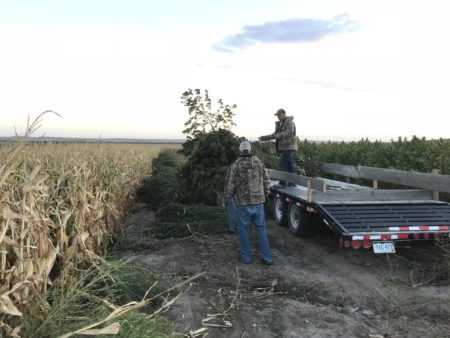Are you one of those people on the fence about using Hemp products? I’m not talking about Cannabis Indica (Marijuana), but about Cannabis Sativa (industrial hemp) and the Cannabidiol (CBD) extract that is utilized from this plant.
It has become the rave in the past year and is included as an ingredient in a great many products, from face cream, to hemp-health tinctures, pain salves, liver aids, and many, many more. You can add a few drops in a protein shake, smoke it in a vape pipe or rejuvenate your skin with face lotions containing it.
Why has it become so important? One of the primary reasons is that CBD has over 113 compounds that work synergistically with your body’s endocannabinoid system. This means that unlike a single focus drug such as a pain killer or antibiotic sold through the pharmaceutical industry, CBD becomes multi-focused creating a myriad of health improvements.
Advertisement: Kanbala (click on photo for more info)
 Do not mistake it with marijuana because it does not get you high. Why? Cannabidiol extracts have no THC, which is that part of a cannabis plant that is psychoactive. Instead, CBD varieties of hemp are specially bred to conform to the USDA policy limiting them to a content of less than .3% THC, this can be written as 0.003% thus, you can observe how very little THC is in these plants, instead, they are very high in CBD, which has health benefits beyond belief.
Do not mistake it with marijuana because it does not get you high. Why? Cannabidiol extracts have no THC, which is that part of a cannabis plant that is psychoactive. Instead, CBD varieties of hemp are specially bred to conform to the USDA policy limiting them to a content of less than .3% THC, this can be written as 0.003% thus, you can observe how very little THC is in these plants, instead, they are very high in CBD, which has health benefits beyond belief.
But, that’s not all, hemp is a green crop, producing four times the amount of fiber per acre as forest and it can be planted year after year. In some climates, you can get four crops per year, which is equivalent to the fiber of 16 acres of forest. And, paper made from hemp is much stronger than paper made from wood. Did you know that the U.S. Constitution is written on hemp paper?
You may be asking what can hemp be used for?
Since before the pyramids, humans have used parts of the hemp plant for food, textiles, paper, cloth and fabric, and fuel oil. The modern processing technologies we have today make it possible to create alternatives to gasoline, plastic, and other petroleum products that can lessen our reliance on fossil fuels.
As mentioned above, hemp is a renewable resource that can be produced domestically. It grows quickly, almost like a weed and requires far less water and energy than plants like corn, it naturally resists plant diseases, requires little weeding, thrives in almost all climates, and enriches the soil.
Important Applications of Hemp
Food and Nutrition
Hempseeds and hemp oil are very nutritious and delicious. Hempseeds are an excellent source of protein, minerals, and dietary fiber. Also, hemp is the only plant that contains all the essential fatty acids and amino acids required by the human body. Imagine that! As you are aware from other articles on this site, these essential nutrients affect a variety of body functions, including metabolism, the skin, mood, behavior, the brain, and the heart. A great many people eat fish and take fish oil supplements to get these essential fats. Today, concerns surrounding fishing and the chemical contamination of modern fish have made many choose hemp instead, which is excellent option for vegetarians.
Additionally, hemp is good for animals; as a matter of fact, some veterinarians recommend including hemp in the diets of pets and livestock. Throughout Europe, fishermen sprinkle hempseed on the water as an effective bait. Songbirds preferentially pick hemp seed from among other birdseeds. Hemp foods are becoming more and more popular as the public discovers the nutritional benefits and culinary uses of hemp. But, this is not all, there’s so much more to this plant.
Body Care
Because of the high content of beneficial oils and natural emollient properties, hemp has become a common ingredient in lotions and many other skin, hair, and cosmetic products. It has been found to be a good alternative to the chemicals present in many petroleum-based lotions and cosmetics.
Paper
Hemp is an ideal material for making paper – as mentioned above, the U.S. Constitution is printed on hemp paper. Hemp regenerates in the field in four months (unlike trees which can take 10-30 years or more to become harvest-able after planting). Imagine how stable global forests would become in relation to growth and greenhouse gases if most of our fiber for paper and other wood products were derived from hemp! Historically, hemp has been used to make paper for thousands of years. Hemp paper quality is superior to wood-derived paper and is naturally acid free. Plus, it does not become yellow and brittle or disintegrate over time like conventional paper.
Fabric, Textiles, and Rope
Hemp can be used to make a variety of fabrics just like cotton, but is more durable. Hemp is also excellent for making rugs and other textiles. The word canvas comes from the Latin word for hemp.
The oldest known woven fabric was made from hemp and not only that; Levi Strauss’ original denim jeans, the first American flag, and the Constitution were all made from hemp. It was a common material for clothing until the cotton industry gained strength in America. Hemp is the traditional rope making fiber due to its flexibility, strength, and resistance to water damage. In past centuries, hemp was extremely important to the Navy, the shipping trade, and fishing because it was used to make ropes, rigging’s, nets, and sails.
Advertisement: Amazon (click on photo for more info)
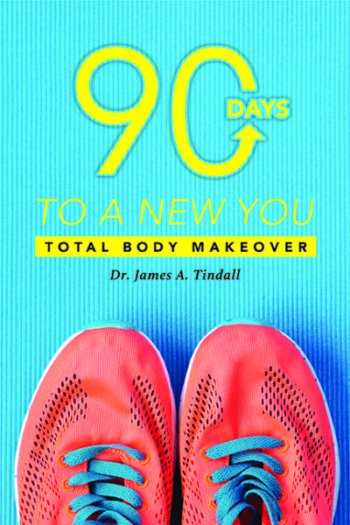 Hemp was outlawed in 1937 in the U.S. due to the potential of harvesters getting high, but more due to competition of the forest industry controlled by the wealthy of the day. It was legalized again during World War II so that farmers could grow it for making hemp ropes for the U.S. Navy. But, after the war is was again outlawed. With that move, research, particularly related to health benefits from hemp languished in the U.S., but flourished in Israel.
Hemp was outlawed in 1937 in the U.S. due to the potential of harvesters getting high, but more due to competition of the forest industry controlled by the wealthy of the day. It was legalized again during World War II so that farmers could grow it for making hemp ropes for the U.S. Navy. But, after the war is was again outlawed. With that move, research, particularly related to health benefits from hemp languished in the U.S., but flourished in Israel.
Fuel
For hundreds of years, hemp oil was used as lamp oil. It slowly began to be phased out in the U.S. in the 1870s when petroleum was introduced. But, it is longer burning that petroleum oil.
Today, hemp oil can be used to create biofuels similar to ethanol from corn and thus, to replace gasoline for diesel engines. Unlike fossil fuels, biofuels are renewable and produce less of the greenhouse gas carbon monoxide.
Plastics and Plastic Alternatives
Standard plastic is made from fossil fuels using what many consider as toxic chemicals. Almost everything we buy is wrapped in cellophane – our landfills are filled with it. A variety of alternatives to plastic can be made from hemp. As an example, in 1941, Henry Ford held a media event where chopped a prototype car body made from hemp and other plant material to prove its strength. The technology was never put into mass production, cars continued to be made of steel, and plastics made from petrochemicals became the norm. I would submit to you that if we used hemp instead of the plastics of today, our cars would be much stronger and lighter, as well as more crash proof.
In a wave of good fortune, thanks to those among us with vision, rich and poor alike, the number of available products made from hemp plastics is on the increase as awareness of the importance of developing sustainable alternatives grows.
Building Materials
Hemp based materials can replace wood and other materials used to build homes and other structures including foundations, walls, shingles, paneling, pipes, and paint. Not only that, the insulation ability of hemp will strengthen the structure of these buildings and reduce energy use due to hemp’s insulation factor. As an example, modern hemp building materials Hempcrete and Isochanvre are lightweight, waterproof, fireproof, self-insulating, and resistant to pests.
Hemp’s Past and Future
We haven’t even discussed the health benefits of hemp yet, but you are likely asking If hemp is so useful and practical, why hasn’t everyone heard of it?
The answer is political. Since 1937 in the United States, growing hemp was largely prohibited and there is a great fear around it due to its resemblance to marijuana. As an example, I could give testimony before a congressional committee and it would still be difficult to make more than 10% of that committee to understand the difference between hemp and marijuana due to perception. Why? Because hemp looks very close to marijuana in appearance. As an example, look at the cover of this month’s issue of My Health Express. That is industrial hemp grown in the field in Colorado in 2018. To the uninitiated, particularly politicians, it looks like and would likely be called marijuana. But, as stated earlier, hemp does not contain the active chemicals that cause mind-altering effects.
These are THC (Tetrahydrocannabinol), one of at least 113 cannabinoids identified in cannabis. Thus, although THC in minute amounts is contained with hemp CBD extracts, it is not enough to make you high. Let’s look at an example. I’m growing hemp in Colorado and you decide with a group of your friends to take a 5-finger discount of some of the plants, so you can take them home and get high. Good idea right? No! Why? Because, due to the less than .3% THC content specified by law in them, you would need to individually smoke 1,500 pounds per hour to get high from them. How does this equate? It means you’d need to smoke about ¾ of an acre in one hour to get high. Again, look at the cover photo for this month. Do you honestly think that’s even remotely possible?
Historically, hemp was always important in America, especially during the 1770s – several of our founding fathers grew it on their estates. Primary among them was Thomas Jefferson who said, “Hemp is of first necessity to the wealth and protection of the country.” Ironically, there were times in the U.S. when farmers were legally required to grow it. During World War Two, the American government encouraged farmers to grow it to help aid the war effort. This was short lived due to pressure from the forest industry, and as mentioned above, hemp was outlawed.
Advertisement: Rolex (click on photo for more info)
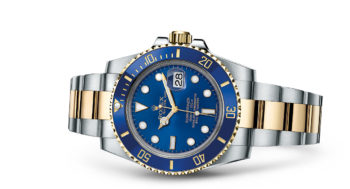 Even that was political. In the 1930s, a “reefer madness” campaign began in the United States to stir up fear around hemp, which to strengthen their case, political stooges of the day called it marijuana. However, today it is clear that these beginnings of “the war on drugs” were pushed into being by the newspaper, cotton, and petroleum industries. All of whom benefited greatly financially from hemp prohibition – in the beginning and even today, it’s still all about the money. There are many people in the United States working to make growing hemp legal, however for the time being the Federal laws remain restrictive. Fortunately, states have stepped in and began charting their own course and laws, removing cultivation and industry benefits from Federal authority.
Even that was political. In the 1930s, a “reefer madness” campaign began in the United States to stir up fear around hemp, which to strengthen their case, political stooges of the day called it marijuana. However, today it is clear that these beginnings of “the war on drugs” were pushed into being by the newspaper, cotton, and petroleum industries. All of whom benefited greatly financially from hemp prohibition – in the beginning and even today, it’s still all about the money. There are many people in the United States working to make growing hemp legal, however for the time being the Federal laws remain restrictive. Fortunately, states have stepped in and began charting their own course and laws, removing cultivation and industry benefits from Federal authority.
Ironically, in Canada, the cultivation of hemp has been allowed by the federal government since 1998. As hemp becomes a growing agricultural sector in Canada and other countries, particularly Europe, the availability of hemp-based products will continue to grow worldwide. This means that health benefits from hemp will also continue to expand.
Health Benefits of Hemp and CBD
Stating there is a lot of hype around CBD is an understatement. Cannabidiol is showing promise as a pain reliever, epilepsy treatment, and for wasting disease associated with cancer. And, this is only a few of the areas supported by research. There are many more, particularly from Israel and there is literally millions of cases of anecdotal evidence of health benefits reported by those using CBD in the U.S. These include reducing tumor size of brain cancer, healing breast cancer, Alzheimer’s, pain, and so many more. By now, you’re asking “does the stuff really work?”
What is CBD?
Cannabidiol (CBD) is one of over 80 phytocannabinoids or chemical compounds, produced by the cannabis plant. Cannabidiol oil is what you get when you extract cannabinoids from cannabis sativa and mix them with a carrier oil such as MCT (a form of coconut oil). Until recently, THC (or tetrahydrocannabinol), the compound in cannabis that gets you high, was the most well-known element of the plant—but now CBD is giving THC a run for its money. The reason for this is because THC comes from marijuana plants (Cannabis Indica) and CBD from hemp plants (Cannabis Sativa).
CBD oil will not make you high?
Cannabidiol oil will not get you high. The compound in marijuana that causes the characteristic psychoactive ‘high’ is found in THC, not CBD. By law, hemp plants must test below .3% THC content to be legally grown and to legally grow hemp requires a license. However, while not psychoactive, CBD oil does help reduce anxiety and depression. Also, because CBD is an oil extract, the process of extraction will recover some THC, but again, less than .3% as required by law. A word of advice, hemp is not legal under Federal laws and banks do not usually work with marijuana and hemp growers due to this. Also, if you work for groups that do not allow it such as the Federal government, some state governments, etc., and your workplace has a zero-tolerance policy, you might want to steer clear of use. Currently, CBD is legal in all the states where recreational marijuana use is legal—26 states, including California and Colorado. The same goes for states where medicinal use is allowed. Outside of these states, legality of CBD becomes murky. If you ever have doubts, simply check with your state’s laws.
Why use CBD oil?
A great many state that CBD helps to reduce pain, anxiety, depression and stress, and that it also improves the immune system, reduces inflammation, and so much more.
Among those who use CBD, 42% said they stopped using traditional medications like Tylenol and other prescription drugs such as Vicodin in favor of CBD. In a survey conducted by Brightfield Group and HelloMD (an online community bringing doctors and cannabis patients together), 80% said they found the products to be either “very or extremely effective.” This is quite a statement, especially considering an overwhelming majority of those reporting.
How Much Cannabidiol (CBD) Should I Take?
Hemp-extract therapeutics can be accurately termed personalized medicine. One of the problems with this type of medicine, due to inadequate synergistic research, is finding how much of the product you should take. The proper treatment regimen depends on the individual – due to biochemical individuality – and the medical condition being treated.
To get the maximum therapeutic benefits, you need to choose a product that has undergone the alcohol extraction process and that is full-spectrum. It has been noted that one should choose the products you use that include both cannabidiol (CBD), which is non-intoxicating, and tetrahydrocannabinol (THC), the psychoactive component of cannabis. Both CBD and THC, interact to enhance each other’s therapeutic effects. A patient’s sensitivity to THC is apparently a key factor for determining the ratio and dosage of CBD-rich medicine.
However, you will not normally be able to determine this ratio, i.e., both compounds, unless you live in a state that allows the sale of recreational and medical THC. But you will be happy to know that the greater healing properties are by far, concentrated in cannabidiol and, that is what you should focus on. By determining your proper dosage rate, you have entered the first phase of effective treatment.
Find Your Rate!
You should be keenly aware that marijuana, federal law bans the main source of THC, i.e., marijuana (cannabis), however, dosed cannabis medicine, particularly CBD, is currently available in the form of concentrated oil extracts, infused sublingual sprays, ointments, and other products. Due to federal law, hemp-extract oil(s) (often called cannabis oil or CBD extracts) have varying concentrations of CBD. For example, a 1-ounce bottle is generally a one-month supply with an average recommended dosage rate of 1 mL per day. But, within the industry, concentration and price vary widely and, it is likely that demand will soon begin to outstrip the supply and cause a cost increase in all these types of products.
Advertisement: Tolman Self Care (click on photo for more info)
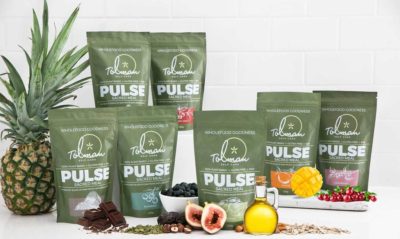 There is a huge amount of anecdotal and even significant research (mostly from Israel) that illustrate the value of cannabidiol extract oil(s) for anxiety, depression, spasms, and pediatric seizure disorders, autism, and many other maladies. If you were to mix both CBD and THC, many patients find they do best with about a 10:1 ratio of CBD:THC but, THC is not usually the best therapeutic option. For cancer, neurological disease, and other ailments, patients may benefit from a balanced ratio of CBD and THC. As a matter of fact, extensive clinical research has shown that a 1:1 CBD:THC ratio is effective for neuro-pathic pain. However, the author suggests that optimizing your therapeutic use of cannabis will entail a careful, step-by-step process; this means to begin with a small dose of CBD-rich product (non-intoxicating) and observe the results – gradually increasing the amount until you find the best dose rate. Essentially, to self-administer, gradually increase the dose rate of CBD-rich product so that you are comfortable with the results. Note: this is not medical advice; performing self-administration of a drug may always create a risk thus, seek advice if you are uncertain about how much or if you should self-administer.
There is a huge amount of anecdotal and even significant research (mostly from Israel) that illustrate the value of cannabidiol extract oil(s) for anxiety, depression, spasms, and pediatric seizure disorders, autism, and many other maladies. If you were to mix both CBD and THC, many patients find they do best with about a 10:1 ratio of CBD:THC but, THC is not usually the best therapeutic option. For cancer, neurological disease, and other ailments, patients may benefit from a balanced ratio of CBD and THC. As a matter of fact, extensive clinical research has shown that a 1:1 CBD:THC ratio is effective for neuro-pathic pain. However, the author suggests that optimizing your therapeutic use of cannabis will entail a careful, step-by-step process; this means to begin with a small dose of CBD-rich product (non-intoxicating) and observe the results – gradually increasing the amount until you find the best dose rate. Essentially, to self-administer, gradually increase the dose rate of CBD-rich product so that you are comfortable with the results. Note: this is not medical advice; performing self-administration of a drug may always create a risk thus, seek advice if you are uncertain about how much or if you should self-administer.
The Bi-phasic Effect
Most do not think of Cannabis, hemp, or cannabidiol as a drug, but as compounds. That said, these compounds have distinct bi-phasic properties, which means that low and high doses of the any of them can produce opposite effects. For example, small doses of cannabis (THC) generally stimulate, while large doses sedate and, too much THC, while not lethal, can amplify anxiety and mood disorders. Conversely, CBD has no known adverse side effects at any dose rate, although not enough scientific research has been done to date. However, drug interactions can be problematic such that an excessive amount of CBD could be less effective therapeutically than a moderate dose. Thus, the adage, ‘more is better’ is generally not the case.
Dosage Guidelines – Averaged across the Industry
• Decide how you want to ingest CBD, which is available as an oil is tinctures, sprays, capsules, and other products. Also, there are topical products that you will not ingest such as face cream, salves, lip balms, etc. For the latter, a dosage rate is not of concern; it is what you ingest orally that is the concern;
• Find your rate. Discover the proper ratio for yourself. For example, begin first with about a ¼ mL dose during the morning; this is a low dose – start low first then, slowly increase. This ¼ mL is a small dose: ingest it 2-3 times the first day, about 3-4 hours apart – this is what anecdotal evidence suggests.
• Use the same dose for several days. Observe how the product affects you, i.e., feel or recognize these effects and if necessary, adjust the ratio or amount.
• Don’t overdo it. Adhere to the ‘less is more’ adage for this type of therapeutics. Remember, there are over 100 compounds in these products that are synergistic with your endocannabinoid system and whose affects are not well known.
• Be aware of possible side effects. Unlike Oxycontin and many other drugs, CBD’s are generally safe and forgiving medicine. Too much could amplify anxiety and mood disorders. Other possible side effects are dry mouth, dizziness and faintness; however, these are typically from THC, rather than CBD.
• Consult your health counselor. Proceed cautiously; if you have a history of alcohol or drug abuse, mental illness, or are pregnant or breastfeeding you must discuss this with your physician.
• The average dose rate. Across the industry, the average dose rate of CBD in the form of a liquid such as a tincture, is 1 mL per day. Once your find your dose rate, ingest beneath the tongue in droplets and talk ½ of it about 2-3 hours before bedtime and the remaining half just as you go to bed. Many people have found this works well, but it is very individualistic. Note: none of the above should be construed as medical advice. The use of such products is done at the readers risk and therefore, it is recommended that you discuss such use with your doctor/physician before self-administering these types of products, especially for oral ingestion!
• While it varies by product, most CBD oil comes in 10 to 15 milligram doses per one milliliter of oil (the size of a standard dropper). As a user, take care, because the actual amount of CBD you’re getting in your oil can vary considerably because the FDA generally considers the oil a dietary supplement consequently, they do not monitor or regulate it. The best way is to buy it from reputable companies who stand behind their dose rate.
• The only real guideline for an “effective” dose is what’s been studied for treating seizures—a use that was recently approved by the FDA, which relates to the most-cited study that used 25 milligrams per kilogram of body weight per day in children, with a max dose of 50 milligrams per kilogram per day. However, the dose may be less for adults because children tend to metabolize more rapidly than adults. As an example, suppose you purchase a 2,000 mg bottle of tincture (a common name for the product). It is typically in a one-ounce bottle, about 30 mL so, you’d take one mL per day which is what the dropper in the bottle generally dispenses. If you take the product over 30 days then, 2,000/30=66.7 mg/day. Based on the above, you’d take about ¾ of the dropper each day. But you really need to do a trial and error to find out what is best for you since we are all biochemically individual. The bottom line is that if you do not feel an effect, gradually increase the dose rate. If you take more than one dropper per day and feel no effect, you likely have been scammed in what is said to be total content in the bottle.
Can CBD help treat pain and anxiety?
While there are thousands of claims to support this, recent promising research also backs up claims about CBD oil and pain. Several studies show that CBD reduces chronic pain with muscle spasms, arthritis, and also nerve pain according to a 2012 study in the Journal of Experimental Medicine and a 2016 study in the European Journal of Pain. Both studies found reduced chronic pain or arthritis pain levels with CBD. While there is not enough studies in the U.S. yet, hundreds of studies in Israel and anecdotal evidence around the world, backs up these claims.
Advertisement: Amazon (click on photo for more info)
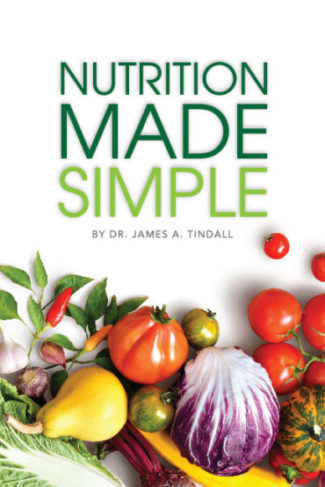 Although currently, it’s not clear how or why CBD may help with anxiety, despite the known sedative effect, it is likely working through the endocannabinoid system in the brain, which impacts the central nervous system, and influences neurological activities – pleasure, memory, and concentration. And, new studies undergoing scrutiny prior to publication also support CBD use for pain and anxiety.
Although currently, it’s not clear how or why CBD may help with anxiety, despite the known sedative effect, it is likely working through the endocannabinoid system in the brain, which impacts the central nervous system, and influences neurological activities – pleasure, memory, and concentration. And, new studies undergoing scrutiny prior to publication also support CBD use for pain and anxiety.
Are there other benefits of CBD oil?
The one use for CBD oil that has been given a go by the FDA is the recent epilepsy drug; the first CBD approved drug on the market. In announcing their approval this June, the FDA released a separate statement cautioning that much more research needs to be done before CBD oil can be considered safe and effective for other uses. Thus, you will likely witness the FDA entrance into the supplement market and other markets soon, for those manufacturing and selling CBD-related products.
Some studies show that CBD may reduce inflammation, which can be caused by physical or emotional trauma, diet, food intolerance’s, diseases, and viral and bacterial infections. And, because autoimmune diseases are almost always linked to inflammation, it is likely that research shows CBD may help with inflammatory disorders such as asthma, Celiac disease, lupus, multiple sclerosis, Hashimoto’s disease, and more. Additionally, researchers have found that giving CBD to schizophrenic patients appeared to reduced psychotic symptoms such as hallucinations and disordered thinking. The same has been found with children suffering from autism and related seizures.
Does CBD oil have side effects?
Thus far, we do not know enough about CBD to give a definitive answer because not enough research has been done in the U.S. However, based on research from Israel, no side effects have been observed using a “common dose rate.” In other words, researchers there, paraphrasing, state that, “you should not get the attitude that if a little is good, more is better.”
The best that can be stated at this point is that we have not seen a lot of negatives of CBD use yet. Most that we have seen are diarrhea and that one of 10 people taking CBD demonstrated higher levels of liver enzymes, which can be a sign of liver damage. And, about 1 percent of patients in epilepsy studies had to discontinue use because liver enzyme increases were high enough that they were considered dangerous. Beyond that, there are no other known chronic issues. It is also interesting to note that the World Health Organization has said that “CBD exhibits no effects indicative of any abuse or dependence potential and that CBD is generally well tolerated with a good safety profile.”
What you should also know is that purity of product is a cause for concern. A 2017 research letter in the Journal of the American Medical Association (JAMA) analyzed 84 CBD products sold by 31 different online companies and found that one in five contained marijuana components like THC, which could result in intoxication, especially if children were to take them. This means the THC in the product exceeded recommended Federal guidelines of .3%.
Additionally, other studies have shown that almost half of CBD oils have other contaminants like herbicides, fungicides, and fungus. What does this mean? It means that you should seek products that are naturally/organically grown. This will improve as the FDA steps in.
The worst interaction with other drugs is cases in which valproic acid, a common seizure medication used to treat depression and bipolar disorder—as well as blood thinners. Cannabidiol appears to react negatively to these drugs so, beware.
Consider CBD like any medication. Before using it, do your “due diligence research” and discuss its use with your doctor/physician before taking the leap. If you suffer from anxiety/depression then, you may want to get off the pills and try some CBD oil. Many will tell you it has changed their lives but, you’ll need to determine that for yourself.
As a final note, if the U.S. and global economy were to collapse, hemp will become a new cash and or barter tool – a new-wave economy! Something to think about.






